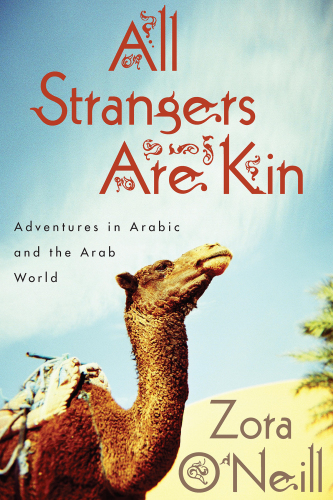
All Strangers Are Kin
Adventures in Arabic and the Arab World
فرمت کتاب
ebook
تاریخ انتشار
2016
شابک
9780547853192
کتاب های مرتبط
- اطلاعات
- نقد و بررسی
- دیدگاه کاربران
نقد و بررسی

April 11, 2016
Travel writer O’Neill’s full-length debut delves into the complex world of Arabic dialects and cultural differences in a tour through Egypt, the Persian Gulf, Lebanon, and Morocco. Returning to Cairo, where she studied Arabic in graduate school, she chats with her former professor on the differences between Fusha (“the language of the books”) and Ammiya (“the language of the street”). In Abu Dhabi she traces the history of the Qur’an as bedrock of the Arabic language and contemplates Jahiliya poetry, a sixth-century C.E. folkloric tradition of nomadic tribes, from which the book’s title is taken. More immersive lessons come from the trash talk of Beirut’s aggressive taxi drivers and the fast friendship of a young woman O’Neill meets on a train in Morocco, who provides cultural insight with grace and humor. The tour is not without tension—Egypt is in post-revolutionary tumult and a hiking trip in Lebanon is marred by intersectarian violence—but O’Neill is careful not to sensationalize events. For non-Arabic speakers, some of the digressions on linguistic details such as root systems, vowel marks, and the endless variations on thanking God may prove inscrutable, but these forays into the technical are few. O’Neill doesn’t teach readers to be fluent in Arabic, but she imparts a more valuable lesson on how (and how not) to learn a language, and the journey is more fascinating than the result. Agent: Gillian MacKenzie, Gillian MacKenzie Agency.

April 15, 2016
Returning to study Arabic less formally than as a college student led the author to travel through the Arab world. The saying goes that it takes seven years to learn Arabic and a lifetime to master it. In her engaging, colloquial account, freelance and travel writer O'Neill recounts how, at the age of 39, just after the events of the Arab Spring, she decided to return to Egypt and take up a more vernacular approach to studying Arabic rather than approaching it "as if it were a dead language." Instead of studying the eloquent Arabic of medieval poetry known as Fusha, the author sought to immerse herself in the way people really speak, the Ammiya, devoid of the "crushing" grammar rules and full of humor and an ingenious root system. Now she wanted to use Arabic "as a social connector." In addition to several weeks of language classes in Cairo and a stint of study in the Gulf states, Lebanon, and Morocco, she was determined to be open to meeting and conversing with anyone who seemed interested, to mostly comic effect. The problem was that each country used a different dialect, and the Arabic she learned in Egypt was considered somewhat pedestrian elsewhere. Traveling alone in Dubai, a rarity in itself, she had hoped to encounter a more "pure" form of Arabic in the Gulf, yet she found so few people who would actually speak to her since the United Arab Emirates is made up of enormous numbers of guest workers. After a literary festival in Dubai, she took language classes in Beirut, impressed by the elegant transformation of the once war-torn city. In Fes, Morocco, where she stayed with a host family, she understood very little of the swift-moving dialect Darija, peppered with much French. In the end, O'Neill, frequently overwhelmed by the "culture's little codes, the clues and symbols that exposed sect and allegiance," needed much more time to master this language. A valiant chronicle of the author's "Year of Speaking Arabic Badly."
COPYRIGHT(2016) Kirkus Reviews, ALL RIGHTS RESERVED.

June 1, 2016
Love of the Arabic language led O'Neill (Moon New Mexico; Rough Guide to Cancun and the Yucatan) to immerse herself in its many variations through study and life in Lebanon, the United Arab Emirates, Egypt, and Morocco. Returning to language study after a hiatus, the author was determined to learn Arabic the way Arabs learned it, rather than the formal Fusha she had previously studied. She engages in Arabic with anyone she can, studies colloquial expressions, and chronicles vocabulary, usage, and contradictions. People she interacts with while picnicking, hitchhiking, even at the aftermath of a car accident are opportunities for an exchange. What emerges is the idea of language as a connection, passion, and a reflection of the lives and history of diverse Arab peoples, a view which is lacking in the general news coverage of Middle Eastern conflict. Glimpses of daily life, particularly of Arab women, are intriguing and sometimes unexpected, including the rich assortment of Lebanese cursing while driving. VERDICT A useful complement to Middle Eastern study and essential for Arabic learners as well as an enjoyable peek into contemporary lives in the region.--Melissa Stearns, Franklin Pierce Univ. Lib., Rindge, NH
Copyright 2016 Library Journal, LLC Used with permission.

























دیدگاه کاربران